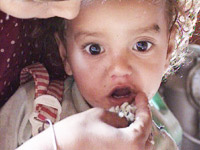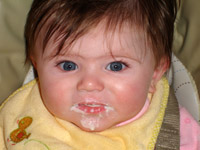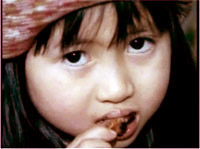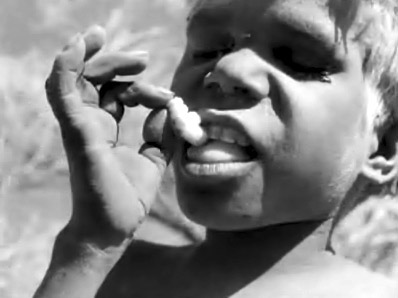- 10 Things Snack Food Companies Won't Say -- SmartMoney (15 November 2010)
- A Calorie Counter [including nutrition facts]
- Against the Odds: Making a Difference in Global Health -- National Library of Medicine
- The Alliance for a Healthier Generation
- American Indian Health and Diet Project
- American Society for Nutrition
- Ancient Olympians Followed "Atkins" Diet, Scholar Says -- National Geographic News (10 August 200)
- Big Food: Health, Culture and the Evolution of Eating -- Yale Peabody Museum of Natural History
- Bobrow-Strain, Aaron. White Bread: A Social History of the Store-Bought Loaf. Boston, MA: Beacon Press, 2012.
- Burnett, John. Plenty and want: a social history of food in England from 1815 to the Present Day. London: Routledge, 1989.
- calculators, calorie and nutrition
- Campbell, T. Colin. Whole: Rethinking the Science of Nutrition. Dallas, TX: BenBella Books, 2013.
- Centers for Disease Control and Prevention (CDC)
- California Center for Public Health Advocacy
- CalorieKing [nutritional facts for thousands of foodstuffs]
- Cardwell, Glenn. Gold Medal Nutrition, 4th? Ed. Champagn IL: Human Kinetics, 2006.
- Center for Foodborne Illness Research & Prevention
- Center for Food Safety
- Center for Science in the Public Interest
- Chrzan, Janet, and John Brett (Eds.). Food Culture: Anthropology, Linguistics, and Food Studies. Brooklyn, NY: Berghahn, 2016.
- Community Food Security Coalition (CFSC)
- Consumer Federation of America
- Cordain, Loren, and Joe Friel. The Paleo Diet for Athletes: A Nutritional Formula for Peak Athletic Performance. Rodale, 2005.
- Coveney, John. Food, Morals and Meaning: The Pleasure and Anxiety of Eating. NY: Routledge, 2006.
- Critser, Greg. Fat Land: How Americans Became the Fattest People in the World. Boston: Houghton Mifflin, 2003.
- De Cássia Vieira Cardoso, Ryzia, Michèle Companion, and Stefano Roberto Marras. Street Food: Culture, Economy, Health and Governance. NY: Routledge, 2014.
- De Vany, Arthur. The New Evolution Diet: What Our Paleolithic Ancestors Can Teach Us about Weight Loss, Fitness, and Aging. NY: Rodale, 2011.
- Diet and Influences on Food Choice -- Teaching the Food System, Johns Hopkins Bloomberg School of Public Health
- Dietary Reference Intakes: Guiding Principles for Nutrition Labeling and Fortification. Institute of Medicine of the Academies of Medicine. Washington, DC: The National Academies Press, 11 December 2003.
- Diets of Athletes at the Ancient Olympics -- topendsports
- Diener, Paul, Kurt Moore, and Robert Mutaw. 1980. “Meat Markets and Mechanical Materialism: The Great Protein Fiasco in Anthropology.” Dialectical Anthropology: An Independent International Journal in the Critical Tradition Committed to the Transformation of Our Society and the Humane Union of Theory and Practice, Vol. 5, (November 1980), 171–192. Accessed September 24, 2023. https://doi.org/10.1007/BF00257766.
- Dufour, Darna L., Alan H. Goodman, and Gretel H. Pelto. Nutritional Anthropology: Biocultural Perspectives on Food and Nutrition, 2nd Ed.. NY: Oxford University Press, 2013.
- Ecological Farming Association
- Edible Schoolyard
- Evolutionary Relationships Hold, Even in Our Guts -- Science (16 November 2010)
- Examination of Front-of-Package Nutrition Rating Systems and Symbols -- Institute of Medicine of the National Academies
- Farm Radio International (FRI)
- Farm to School
- Fat Butts May Be Healthy -- LiveScience (12 January 2010)
- FDA -- U.S. Food and Drug Administration
- Feeding America (fka Second Harvest)
- Finding and Using Health Statistics -- U.S. National Library of Medicine
- Food and Agriculture Organization of the United Nations (FAO)
- Food and Behavior Research -- Alex Richardson
- FoodCorps
- Food and Nutrient Database for Dietary Studies (FNDDS) -- United States Department of Agriculture (USDA)
- Food and Nutrition -- Institute of Medicine of the National Academies
- Food Facts: What is Really in my Food?
- Food Research And Action Center
- The Food Trust
- Foundations of Nutrition Science -- TuftsOpenCourseWare
- Fox, Robin. 2014. "Food and Eating: An Anthropological Perspective," Oxford, UK: Social Issues Research Center, pp. 1-22.
- Glassner, Barry. The Gospel of Food: Everything You Think You Know about Food is Wrong. NY: Harper Collins, 2007.
- Goodall, Jane. Harvest for Hope: A Guide to Mindful Eating. NY: Wellness Cenral/Hachette, 2006.
Harris, Marvin. 1985. Good to Eat: Riddles of Food and Culture. New York: Simon and Schuster.
"Harvard Nurses Study" (The Nurses' Health Study) -- Channing Laboratory
Harvey, Graham. We Want Real Food: Why Our Food is Deficient in Minerals and Nutrients - and What We Can Do About it. Constable, 2006.
Health -- Time
Health Observatory -- Institute for Agriculture and Trade Policy
Hess, John L., and Karen Hess. The Taste of America. NY: Viking / Grossman Publishers, 1977.
Hladick, A., O. F. Linares, H. Pagezy, A. Semple, and M. Hadley (Eds.). Tropical Forests, People and Food: Biocultural Interactions and Applications to Development. Man and the Biosphere Series, Vol. 13. Paris: UNESCO and Parthenon, 1993.
How Americans Eat Today -- CBSNews (12 January 2010)
Institute of Medicine of the Academies of Medicine
The International Breastfeeding Journal
Kessler, David. The End of Overeating: Taking Control of the Insatiable American Appetite. Rodale, 2009.
[Such foods he argues, artfully layer fat on sugar on salt on fat (I've begun to see this as an acronymn--FOS/SOF or more musically "Frankenfoods") to release the brain chemical dopamine, leading to a kind of "conditioned hypereating." -- RH]
Koch, Shelley L. A Theory of Grocery Shopping: Food, Choice and Conflict. Bloomsbury/Berg, 2012.
Lawrence, Felicity. Eat Your Heart Out: Why the Food Business is Bad for the Planet and Your Health. London: Penguin Books, 2008.
Lawrence, Felicity. Not on the Label: What Really Goes into The Food on Your Plate, Revised Edition. London: Penguin Books, 2013.
Le, Stephen. 100 Million Years of Food: What Our Ancestors Ate and Why it Matters Today. NY: Picador, 2016.
Le Fanu, James, M.D. The Rise and Fall of Modern Medicine: Revised Edition. NY: Basic Books, 2012.
Levenstein, Harvey. Fear of Food: A History of Why We Worry about What We Eat. University of Chicago Press, 2012.
Lustig, Robert H. Fat Chance: Beating the Odds Against Sugar, Processed Food, Obesity, and Disease. NY: Hudwon Street Press / Penguine, 2012.
Martindale's Nutrition Center
Master's and PhD Programs in Nutrition -- PhDs.org
Millstone, Erik, and Tim Lang. The Atlas of Food: Who Eats What, Where, and Why. Berkeley, CA: University of California Press, 2008.
Moffat, Tina, and Tracy Prowse. Human Diet and Nutrition in Biocultural Perspective: Past Meets Present. NY: Berghan, 2010.
Mol, Annemarie. Eating in Theory. Durham, London: Duke University Press, 2021.
National Farm to School
Nestle, Marion. Soda Politics: Taking on Big Soda (and Winning). Oxford University Press, 2015.
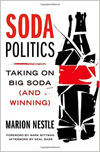
- Nestle, Marion. What to Eat. NY: North Point, 2007.
- Nestle, Marion, and Malden Nesheim. Why Calories Count: From Science to Politics. University of California Press, 2012.
- Nomads in Surprisingly Good Health Despite Poor Diet -- Live Science (18 May 2010)
- Northland hospitals need to put prevention into practice and support nutritious food -- Nancy Sudak and Steve O'Neil, Duluth News Tribune (17 April 2012)
- Nutrition and healthy eating -- Healthy Lifestyle, Mayo Clinic
- Nutrition at the Olympics -- topendsports
- Organic Consumers Association
- Perlmutter, David and Kristin Loberg. Grain Brain: The Surprising Truth about Wheat, Carbs, and Sugar--Your Brain's Silent Killer. NY: Little, Brown and Company, 2013.
- Physicians Committee for Responsible Medicine
- 'Pick the right veg' for health -- BBC News (27 April 2010)
- Pollan, Michael. In Defense of Food: An Eater's Manifesto. NY: Penguin, 2008.
- Princeton Food Conference 2006
- Promote Healthy Eating, Know Your Farmer, Know Your Food -- United States Department of Agriculture (USDA)
- Public Health Genomics -- Centers for Disease Control and Prevention
- Roach, Mary. Gulp: Adventures on the Alimentary Canal. NY: W.W. Norton & Company, 2013.
- Roberts, Paul. The End of Food. Boston: Houghton Mifflin, 2008.
- The Robert Wood Johnson Foundation
- Robinson, Jo. Eating on the Wild Side: The Missing Link to Optimum Health. NY: Little, Brown and Company, 2014.
- Salatin, Joel. Holy Cows and Hog Heaven: The Food Buyer's Guide to Farm-Fresh Food. Swoope, VA: Polyface, 2006.
- Schatzker, Mark. The Dorito Effect: The Surprising New Truth About Food and Flavor. NY: Simon & Schuster, 2015.
- The Science of Picky Eaters -- NOVA Science Now (July 2009)
- Setting Up and Running a School Garden -- Food and Agriculture Organization of the United Nations: Corporate Document Repository
- Should I Eat This -- Health, Time
- Simon, Michele. Appetite for Profit: How the Food Industry Undermines Our Health, and How to Fight Back. NY: Nation/Avalon Publishing Co., 2006.
- Steingarten, Jeffrey. It Must've Been Somethin I Ate. NY: Alfred A. Knopf, 2002.
- Steingarten, Jeffrey. The Man Who Ate Everything. NY: Vintage Books / Random House, 1997.
- Summer Tomato
- Take the Nutrition Quiz -- Live Science (11 July 2008)
- Taubes, Gary. Good Calories, Bad Calories. NY: Knopf, 2007.
- Team Nutrition: Educators -- United States Department of Agriculture (USDA)
- TeensHealth -- Nemours
- Top 10 Good Foods Gone Bad -- Live Science
- Top Nutrition Graduate Programs in the U.S. -- Education-Portal.com
- Top 100 Stories of 2009 #53: The Fat That Can Make You Thin -- Discover (30 December 2009)
- Toussaint-Samat, Maguelonne. A History of Food. Chichester, UK: John Wiley & Sons/Blackwell 2009.
- Twinkie defense -- Wikipedia
- Two Angry Moms -- school food envoronments
- United Nations World Food Programme
- USDA Economic and Agricultural Research Services
- USDA Report "How Local Farmers and School Food Service Buyers Are Building Alliances" <http://www.ams.usda.gov/tmd/mta/publications.htm>
- Walker, W. Allan. Eat, play, and be healthy:The Harvard Medical School Guide for Healthy Eating for Kids. NY: McGraw-Hill, 2005.
- Warner, Melanie. Pandora's Lunchbox: How Processed Food Took Over the American Meal. NY: Simon & Schuster, 2013.
- Watt, Bernice K, and Annabel L Merrill. Composition of Foods (Agriculture Handbook No. 8). United States Department of Agriculture, 1985. ["the bible of nutrition" -- Felicity Lawrence]
 What is a calorie? -- Emma Bryce What is a calorie? -- Emma Bryce
- What's in the Food You Eat -- United States Department of Agriculture (USDA)
- Willett, Walter C. Eat, Drink, and Be Healthy: The Harvard Medical School Guide to Healthy Eating. NY: Simon & Schuster/Free Press, 2005.
- Winson, Anthony. The Industrial Diet: The Degradation of Food and the Struggle for Healthy Eating.
NY: NYU Press, 2013.
 You Are What You Eat You Are What You Eat
- Your Energy Needs -- BioEdOnline
- Zaraska, Marta. Meathooked: The History and Science of Our 2.5-Million-Year Obsession with Meat. NY: Basic Books, 2016.
|

